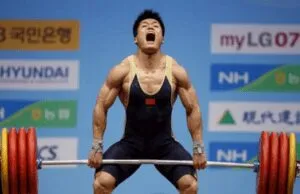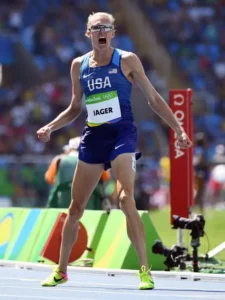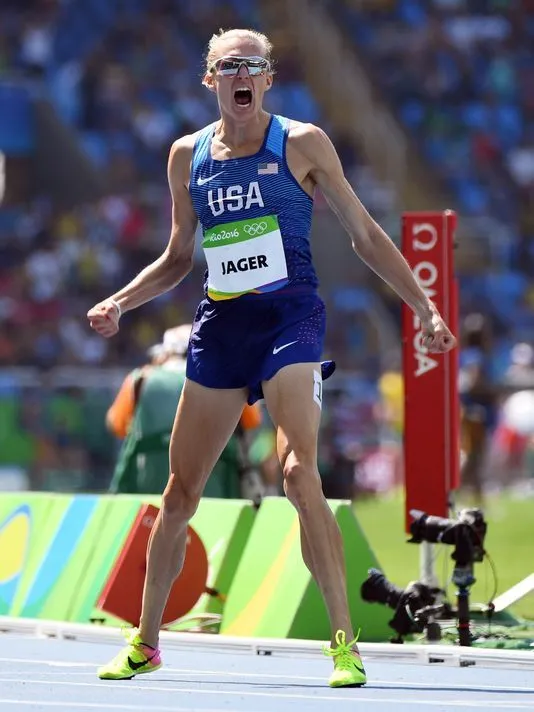What comes to mind when you hear the word athlete? Probably a lean, muscular, powerful looking body, defined muscles, and the ability to do things like jump to insane heights, or run for long distances. What do you think of when you think of training like an athlete? Perhaps long, grueling, high paced workouts, and flashy, complex or mysterious exercises. The concept of “training like an athlete” has completely pervaded the fitness industry in the last 10 years, and now it’s part of the slogan of dozens if not hundreds of gyms and fitness programs across the country. But guess what: They’re all mostly complete bullsh*t.
Consider CrossFit, one of the biggest catalysts to the “train like an athlete” movement, and the rhetoric found directly on their website, “We scale load and intensity; we don’t change the program. The needs of Olympic athletes and our grandparents differ by degree, not kind.” You don’t need to know anything about fitness or sports to understand that this statement is not only incorrect, but it actually cannot be true.
Let’s compare two actual Olympic athletes, Lu Xiaojun of China, who competes in Weightlifting, and Evan Jager of the USA who competes in Steeplechase. What do they have in common? They

both competed in the summer games in Rio 2016, and they both silver won medals. That’s where the similarities end. Just look at their bodies and you can tell how different their respective sports are. As a Weightlifter, Lu needs to be explosive, and maximally strong. His body relies on what are called “fast twitch” muscle fibers, which create strong, powerful contractions, but fatigue quickly. His body relies heavily on the anaerobic alactic energy system, which like his muscle fibers, works explosively, but runs out of energy quickly. He has to have great total body strength, and a lot of flexibility in his hips and arms and back. Lu’s frame is almost perfect for Weightlifting, with his relatively short arms and legs, and long torso and back. At his height of 5’8, and 77kg, which is roughly 170lbs, he’s considered “overweight” by standard BMI charts.

Evan Jager on the other hand, needs to be durable, relying more on slow twitch muscle fibers, which aren’t as powerful, but can endure extremely long bouts of energy output. The 3000m steeplechase also utilizes the aerobic energy system, which can supply energy to the athlete for a long period of time. His frame is perfect for steeplechase, he’s naturally thin, with long legs, arms, and a short torso. At 6’2 in height, he tips the scales at a staggering 146lbs. This actually puts him below the lowest marker of “normal weight” on a standard BMI chart.
You don’t need to know anything about Weightlifting or the 3000m Steeplechase to see that their training would be wildly different from one another. Their sports utilize different muscle fibers, different energy systems, have completely different durations and movements. Their bodies are shaped completely differently. In fact if you google “Evan Jager,” training videos of him running are returned in the search. Unsurprisingly, if you do the same for Lu Xioajun you’ll find videos of him lifting weights. Shocker. So if two Olympic athletes of roughly the same caliber in regards to their accomplishments, don’t train the same way, why would you train the way they did? Although we may think broadly about aesthetics and attributes when we hear the word “athletic,” the word is actually quite meaningless without context.
GPP vs. SPP
Hopefully you’re starting to understand how heavily your goals can affect your training. To say that a runner shouldn’t train like a Weightlifter seems obvious, but it needs to be said, because so many coaches and gyms are touting that their programs are akin to how an athlete trains, even though there is absolutely no standard definition for “training like an athlete.” But if your goal is to train for a specific sport, that doesn’t mean that you should simply look up the training program of your favorite athlete, and follow it. Sadly, this is a mistake many athletes make. Before you embark on training that is meant to specifically enhance your performance in a particular sport, or to obtain the look of your favorite athlete, you must check off a few boxes of general fitness. This is known as general physical preparation, or GPP. The body functions as a cohesive and intertwined unit, if one particular attribute is severely underdeveloped, it will hinder performance, even if that attribute doesn’t directly correlate to a given sport. Here’s an example: Although Weightlifting isn’t a cardiovascular sport, having a healthy cardiovascular system can help enhance the training of a Weightlifter. Your cardiovascular system helps to transport blood and nutrients to the muscles, as well as remove metabolic byproducts that are the “waste” produced by the muscles. Lu Xiaojun doesn’t need to be able to run 3000m, but he does need to have blood and nutrients regularly shuttled in and out of his muscles to help them recover from the very heavy training sessions he performs. Conversely, Evan Jager doesn’t need to be able to squat double his body weight, but stronger muscles can create harder contractions which can help propel him faster down the track. Every athlete at the elite level has a period of GPP in their yearly training plan.
https://www.instagram.com/p/1dnZAqAcGd
The other end of the spectrum is specific physical preparation, or SPP. This is the period of training that focuses specifically on the attributes that play a direct role in your sport. For Lu that would be performing the snatch and clean & jerk and their variations. For Evan Jager that would be running, and practicing hurdles, which are found in the Steeplechase run. How long these phases of training last depends on three primary factors in this order:
- The level of the athlete
- The sport itself
- How far out the athlete is from a major competition or goal
Let’s break it down
Athlete Experience
Let’s say you wanted to learn how to play basketball, and that you’ve never played or even touched a basketball in your life. You decide to hire a coach once a week to teach you the basic skills of the game, dribbling, passing, shooting, etc… You practice once a week for 3 months. Do you think your skills would improve? It’s not a trick question, unless you were a really slow learner, you would probably improve your basketball skills significantly. Now if you found out that Larry Bird only practiced his skills once a week, would that surprise you? Of course it would. We know he practiced more than once a week. Larry Bird was famous for his work ethic, but it’s intuitive that someone at his level would need more practice to continue to improve. Fitness works the same way. If you’ve been a couch potato your entire life, it’s not going to take a ton of exercise to improve your fitness. In fact that’s why so many people are able to lose weight simply by starting a walking routine. The less conditioned your body is, the less work it takes to make changes, and the longer you’ll see progress from any single training method. The more fit you are, the more total work you’ll have to do to elicit change. What does that mean for you? It means that your GPP phase will be longer, and your SPP phases will be shorter. In fact, depending on where you’re starting, you may not get to a SPP phase for a year or more!
https://www.instagram.com/p/BSvsxMZBWXO
The level of the athlete will also change what is considered GPP and what is considered SPP. If a high school basketball player comes to our gym, our focus is on a wide variety of training, which will improve strength, mobility, durability, body awareness, etc… A high school athlete could probably train this way for all four years of high school and see amazing progress. Where GPP for a Weightlifter will include very little strength training, since strength is a primary attribute in their sport. Instead we’ll focus heavily on rotation, unilateral movements, lateral movement, and aerobic capacity, which are all attributes which aren’t directly developed in the training of Weightlifting. A well developed Basketball player’s GPP would likely include a lot of strength training, and maximal explosive training, and would probably last 4-8 weeks.
Variance Between Sports
If you compare a sport like basketball to a sport like Weightlifting, the training phases will be significantly different, for a few reasons. First of all, basketball has a well defined season, but each season is as important as the next. Immediately after the season ends, athletes take rest, this gives both their body and their mind time to relax, and recuperate. This is a very defined period, and happens the same time every year. During the off season, after rest, is when most of the GPP is performed. A sport like Weightlifting has no official season, it’s typical that certain tournaments happen around the same time of year each year, but there is no official start or finish to the season. Every Weightlifter’s ultimate goal is the Olympic Games, which happen only once every four years. As such we tend to think of the training of Weightlifters in quadrennial periods. Olympic Gold Medalist Ilya Ilyin took an entire year off after winning in London 2012, knowing that it would be four whole years before he had to be in absolute peak physical condition. This is one reason why the Olympic Games are held in such high regard, because Olympic athletes have to really think about the long term in regards to their training. With this comparison in mind, it’s easy to see how the sport itself influences the phases of training.
Time Until Competition
You want to be in the best physical condition during the most important games or tournaments of the season. That means the closer you are to a competition, the more specific your training should be. If you’re a basketball player who’s team just made the playoffs, you probably shouldn’t be in the gym chasing back squat PRs. Instead your training should be completely focused on skills, game strategy and plays, and recovering from team practices and games. If you’re in the off-season, you should be taking a significant amount of time to address weaknesses and work on attributes that get depleted during your season. Unfortunately at the youth and teen level so much focus is now placed on early specialization and year round play for specific sports, kids never have the time to rest, recuperate, and work on their weaknesses. That’s why injury rates are higher than ever, despite training, nutrition, and medical science being more developed than it ever has been in history.
https://www.instagram.com/p/BT1Tcz-FNNq
How You Can Actually Train Like an Athlete
Doing the latest high intensity circuits or flashy exercises may not actually be how true elite athletes train, but there is still a lot you can learn from an athlete, and apply to your own training to see huge success, regardless of whether or not you’re a high school baller or someone looking to feel more confident in a bathing suit:
- Get a coach: Think about it, almost all legendary sports figures are associated with a coach. Tom Brady and Bill Belichick, Tim Duncan and Gregg Popovich, Jon Jones and Greg Jackson. A coach is an expert in managing, planning, and thinking critically and objectively about your training. This is especially important when we are talking about training for something like losing weight, which is heavily tied to our emotions, which can make it difficult for us to analyze ourselves and our training without bias.
- Trust your coach: You don’t ever see Tom Brady arguing with Bill Belichick. There’s a reason for that. The athlete/client’s job is to execute as best as possible, the coach’s job is to plan and manage the training. If you’re critical of whether or not your coach knows what they’re doing, first ask yourself why you hired them in the first place, and secondly, follow their program to the best of your ability for a minimum of 30-60 days. If you are constantly making changes to the plan, and then don’t get the results you want, that’s no one’s fault but your own.
- Use phases of training: In the general fitness population there seems to be two types of people, those who don’t train enough, and those who train too much. We have clients who maybe average 1-2 training sessions per week and are upset that they haven’t lost 50lbs, and those who are constantly trying to add more and more and more to their training on top of what we program. They both have one thing in common: they rarely reach their goals. Consistency is a huge part of success, but giving your body rest is also crucial. Elite athletes don’t train harder than you do, they train smarter, and they take their rest and recovery just as seriously as their training. Massage, chiropractic, sleep, nutrition, supplementation, time off and even meditation are all part of elite athlete training. No one can go 100% 24/7, 365 without hurting themselves or suffering from long term burnout.
- Let go of failure: I can’t tell you how many times a client completely blows out their nutrition plan over a long weekend, or at a work function, and then has a near full-blown meltdown about it for the next week or more. Athlete’s on the other hand, may miss a game winning shot, only to bounce back the very next day. There’s nothing you can do about the past, so you have to let it go. Learn from your mistakes, but don’t dwell on it, because it will only further slow you down.
- Have a plan: “randomized” or “constantly varied” training is all the rage right now. It makes perfect sense, as we further immerse ourselves in the fast moving world of social media, our attention spans seem to shrink every day. Unfortunately this means many people have put entertainment above results in terms of training, but athletes have a plan laid out in advance that they know will lead them to the end result they desire. It’s been said that failing to plan is planning to fail, fitness is no different.
- Think of exercises as skills instead of punishments: Parlaying off of the previous point, when we think of exercise as a skill we must gain, instead of a punishment for our bad behaviour (eating “bad” foods, skipping a workout the week before, etc…), training becomes both more practical and enjoyable. Many clients are surprised that the exercises in their programs repeat for 4 weeks before changing, because randomized workouts are the current norm, but let’s consider our goals. If, for example, your goal is to perform one unassisted pull-up, it is quite easy to construct a training program that will bring you to that goal. It would include things that help to reduce body weight (one of the biggest challenges to doing a pull-up) as well as strengthening the muscles that are responsible for performing a pull-up, which are the primarily the lats and biceps. Now, let’s again use basketball as an analogy. If you hired someone to teach you to play basketball, and were to meet with them 3 times per week what would you expect to do during those sessions? Probably drills for shooting, passing, dribbling etc…Would it make sense that one day your coach had you practicing basketball skills, and the next session skills for soccer, and the session after that skills for baseball? If that were the case, would you get better at basketball? Maybe a little bit, but certainly not as quickly or directly if you simply practiced for the thing you wanted to accomplish. Exercise works in precisely the same way. If you want to be better at running, at some point, you’ll have to run, you can’t just do a bunch of random exercises and hope for the best.
- Appreciate your body for what it can do, not just for how it looks: The fitness industry is dominated by vanity, which results in many people placing an aesthetic ideal well above their health and performance. Our bodies were made to run, jump, climb, and lift, to interact with the world around us. Through movement we gain understanding, experience enjoyment, and create vitality, performance sticks with you for a long time, sometimes a life time, but aesthetics, especially what is considered “ideal” by most is fleeting. The pictures of the sexy bodies you see in magazines, in social media, on television exist either for a brief moment (a single day of a photoshoot or competition), or don’t exist at all (photoshopped, airbrushed, etc…). I’ve personally witnessed people accomplish incredible progress in terms of their health, well being, and general capability as a human, only to utter words of self-deprecation because their butt isn’t a certain shape, or their waist line still held a bit of fat. Athlete’s do what it takes to perform their best. Sometimes that produces a physique similar to the societial ideal sometimes it doesn’t, but they don’t concern themselves with it.
- Don’t wait to be motivated: Motivation is fleeting. Athlete’s train because it is inline with their goals to do so. They accept the fact that if they are going to get what they want in the long run, they need to put the effort in now, even if they aren’t feeling motivated at the moment.
- Take Notes: The importance of note taking cannot be overstated. It’s a basic principal of biology: stimulus must increase if you are to continue to elicit change in an organism. Simplified: you must do more work now than you did last time. The only way you can make sure that happens, is by knowing what you did last time, and if you don’t take notes, you won’t know!
This list could likely go on indefinitely. You don’t have to be an athlete, in fact, I would say that most of you shouldn’t be. Sports aren’t about being healthy, they are about winning, and most people should focus on being healthy. With that said, we should recognize that the parts of athletic training that we should adopt aren’t the supposed hardest, most grueling workout sessions, or the difficult most painful exercises, but instead, the right mindset. The right mindset is the key to achieving any of your goals, because your body is simply a slave to your mind. Your body doesn’t choose when to move, when to sleep, when and what to eat. Your mind controls all of that. Your limits, and also your happiness are determined by the space between your ears, not your body. And if you don’t acknowledge that, you’ll never end up where you want to be.




